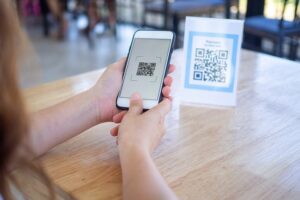The QR code is a two-dimensional code composed of black and white squares. By scanning it with a smartphone camera, you can obtain information such as URLs, phone numbers, and email addresses.

The Invention of the QR Code
The QR code was developed in 1994 by Mr. Masahiro Hara, an engineer at the Japanese automobile parts manufacturer "DENSO WAVE". At the time, barcodes were used in manufacturing, but a code that could read more information at a faster rate was needed. Mr. Masahiro Hara developed the QR code in response to this need. The QR code was first adopted for "DENSO" products in Japan. It then spread rapidly within Japan and is now widely used around the world.

Uses of QR Codes
QR codes are now used for various purposes. For example, they can be used for:
- Displaying product information
- Announcing coupons and campaigns
- Linking to websites
- Displaying maps and transportation information
- Payment

Types of QR Codes
There are three main types of QR codes: "Model 1," "Model 2," and "Micro QR."
The size of a QR code is determined by its version. As the version increases, the size of the QR code also increases.
- Model 1: This is the original QR code. The maximum version is 14, which can handle up to 1167 digits. As the version increases, the data capacity also increases.
- Model 2: This is an improved version of Model 1. The maximum version is 40, which can handle up to 7089 digits. Generally, when people refer to QR codes, they are referring to Model 2.
- Micro QR: This type of QR code can be used in limited space. The maximum version is M4, which can handle up to 35 digits.

QR codes originated as a Japanese technology and were subsequently embraced worldwide. This simple yet revolutionary technology has significantly changed our lives. I believe its influence will continue to grow in the future.